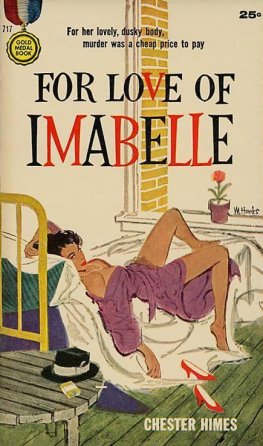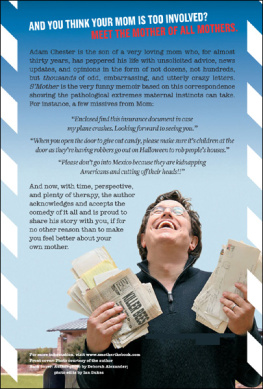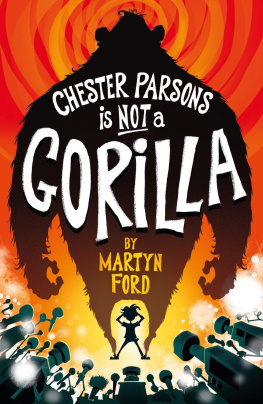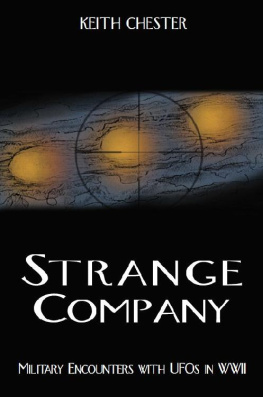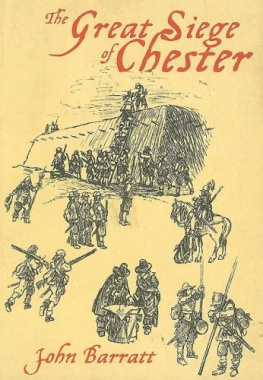Brown Chester - Chester Brown: Conversations
Here you can read online Brown Chester - Chester Brown: Conversations full text of the book (entire story) in english for free. Download pdf and epub, get meaning, cover and reviews about this ebook. City: Canada, year: 2014;2013, publisher: University Press of Mississippi, genre: Detective and thriller. Description of the work, (preface) as well as reviews are available. Best literature library LitArk.com created for fans of good reading and offers a wide selection of genres:
Romance novel
Science fiction
Adventure
Detective
Science
History
Home and family
Prose
Art
Politics
Computer
Non-fiction
Religion
Business
Children
Humor
Choose a favorite category and find really read worthwhile books. Enjoy immersion in the world of imagination, feel the emotions of the characters or learn something new for yourself, make an fascinating discovery.

- Book:Chester Brown: Conversations
- Author:
- Publisher:University Press of Mississippi
- Genre:
- Year:2014;2013
- City:Canada
- Rating:5 / 5
- Favourites:Add to favourites
- Your mark:
- 100
- 1
- 2
- 3
- 4
- 5
Chester Brown: Conversations: summary, description and annotation
We offer to read an annotation, description, summary or preface (depends on what the author of the book "Chester Brown: Conversations" wrote himself). If you haven't found the necessary information about the book — write in the comments, we will try to find it.
Chester Brown: Conversations — read online for free the complete book (whole text) full work
Below is the text of the book, divided by pages. System saving the place of the last page read, allows you to conveniently read the book "Chester Brown: Conversations" online for free, without having to search again every time where you left off. Put a bookmark, and you can go to the page where you finished reading at any time.
Font size:
Interval:
Bookmark:
CHESTER BROWN: CONVERSATIONS
Edited by Dominick Grace and Eric Hoffman
Annotated by Chester Brown
Conversations with Comic Artists M. Thomas Inge, General Editor

Works by Chester Brown
Yummy Fur (minicomic) 7 issues (19831985); reprinted in Yummy Fur 13 (1986)
Yummy Fur 32 issues (19861994)
Ed the Happy Clown originally serialized in Yummy Fur; reprinted in 9 issues (20052006); collected edition 1989, revised editions 1992 and 2012
The Playboy originally serialized as Disgust in Yummy Fur; collected edition 1992, revised edition 2013
I Never Liked You originally serialized as Fuck in Yummy Fur; collected edition 1994, revised edition 2002
Underwater 11 issues (19941997)
The Little Man: Short Strips 19801995 (1998; revised edition 2006)
Louis Riel: A Comic-Strip Biography 10 issues (19992003); collected and revised edition 2003, tenth anniversary edition 2013
Paying for It: A Comic-Strip Memoir about Being a John (2011)
www.upress.state.ms.us
The University Press of Mississippi is a member of the Association of American University Presses.
Copyright 2013 by University Press of Mississippi
All rights reserved
Manufactured in the United States of America
First printing 2013
Library of Congress Cataloging-in-Publication Data
Brown, Chester, 1960
Chester Brown : conversations / edited by Dominick Grace and Eric Hoffman ; annotated by Chester Brown.
pages cm. (Conversations with comic artists)
Includes index.
ISBN 978-1-61703-868-6 (hardback) ISBN 978-1-61703-869-3 (ebook) 1. Brown, Chester, 1960Interviews. 2. CartoonistsCanadaInterviews. I. Grace, Dominick, 1976 editor of compilation. II. Hoffman, Eric, 1963 editor of compilation. III. Title.
PN6733.B76Z46 2013
741.5971dc23 2013011461
British Library Cataloging-in-Publication Data available
The early 1980s is a fascinating period in comics history. The major publishers, DC and Marvel, had assumed a largely hegemonic control of the market, yet new talentparticularly Alan Moore and Frank Miller in their tenures on DCs Swamp Thing and Marvels Daredevil titles, respectivelywere making their first tentative steps towards an eventual revolution in mainstream comics, in subject matter, artistic integrity, and creators rights. Also, certain ground-level comics artistsso-called because they occupied a middle ground between the DIY aesthetic of sexually explicit and politically adventurous underground comix of the 1960s and the above-ground mainstreamwere broadening the possibilities for comics by utilizing the new technologies of inexpensive offset printing and the relatively new market of the comic book shop. Dave Sim (Cerebus), Wendy Pini (Elfquest), and Jack Katz (First Kingdom) took advantage of the opportunities made available via the direct market, a method of selling comics at a discount on a nonreturnable basis to comic shops. The vast majority of these shops patrons were the burgeoning audience of comics fandom, consisting primarily of an older audience of readers that had grown up reading comics and now had disposable income who, in some cases at least, demanded more sophisticated fare than men and women in tights. Art Spiegelmans Maus, the third of a triumvirate that also includes Moore and Dave Gibbonss Watchmen (1986/87) and Millers The Dark Knight Returns (1985/86), was just beginning to be published serially in Spiegelmans anthology series Raw, an anthology that published considerably more experimental comics by an international stable of recognized, and as yet unrecognized, comics talent.
In short, it was an era when anything seemed possible. Young comics artists entered a field where the first generation of comics fans had only recently taken creative control of the mainstream comics they read and enjoyed as kids. New ground-level publishers appearedincluding Comico, Eclipse, First, and Pacificpublishing exciting new work by up-and-coming talents. Moreover, the work, both by above-ground and ground-level comics artists or self-publishers like Sim and Harvey Pekar (American Splendor), pointed toward untold potentiality for the medium. Before long, however, the more atmospheric materialWatchmen and The Dark Knight Returns are instructive hereunintentionally resulted in an aesthetic stranglehold on the medium that ironically cut that limitless potentiality short by making the dark and brooding superhero the order of the day, a form and method that has largely dominated the medium since.
Also taking place at this time was another, lesser-known and certainly less organized movement, one that married the underground aesthetic with a DIY ground-level approach. Certain artists outside the dominant aesthetic of the mainstream, or lacking the capital necessary to break into ground-level publishing, began taking advantage of the mass availability (and relative cheapness) of Xerox printing, using regular carbon paper to copy their original artwork. Called minicomics, these copies were then folded into squares, stapled, and (in those pre-internet days) placed in comic and music shops and book stores and sold inexpensively (generally about a dime compared to the fifty cents or more for mainstream comics), or often traded by mail between various minicomic artists. Because these comics were most often available within only a limited range of wherever these artists lived, and because they were often produced by the artists who wrote and drew them (mostly in black and white though sometimes hand-colored), they had the additional appeal for the reader of being in the know, contributing to their cultish appeal.
Self-publishing has its roots in the Silver Age when, in 1966, comic book artist Wally Wood began publishing his own work, together with the work of other professional comic artists, in the pages of Witzend. The irregular comic provided these artists with an outlet for creative expression unfettered by commercial concerns (although still primarily consisting of material that reflected dominant comic book genres: namely superhero, humor, horror and science fiction). Aside from the Tijuana Bibles, short pornographic comic strips published from the 1920s to the 1940s, Witzend was among the earliest underground comics. By the mid-1960s, underground comix (most of them published in black and white on cheap newsprint paper with four-color covers) began appearing in head shops, emphasizing themes that appealed to their counterculture audience: drug humor, sexual promiscuity, and anti-establishment politics. Because of their limited distribution, underground comix were not subject to the Comics Code Authority, established in 1954 in reaction to the Kefauver Subcommittee on Juvenile Delinquencys hearings concerning the content of comic books, in particular ECs line of crime and horror comics. As a result, they provided comics artists with significant creative freedom. Ironically, by the mid-1970s, the underground comix movement collapsed largely due to what had given it life: its identification with sex, drugs, and leftist politics, which began to create its own creative restrictions. Also contributing to their collapse were the development of new printing technologies such as offset printing; the direct market that allowed for the proliferation of smaller publishers willing to publish nonmainstream work, regardless of subject matter; and the mainstream absorption of the same themes that had made undergrounds distinct. Artists left the undergrounds to work in mainstream comics, with smaller publishers, or to self-publish their own material.
Next pageFont size:
Interval:
Bookmark:
Similar books «Chester Brown: Conversations»
Look at similar books to Chester Brown: Conversations. We have selected literature similar in name and meaning in the hope of providing readers with more options to find new, interesting, not yet read works.
Discussion, reviews of the book Chester Brown: Conversations and just readers' own opinions. Leave your comments, write what you think about the work, its meaning or the main characters. Specify what exactly you liked and what you didn't like, and why you think so.

